I was contacted a while ago by Fosi Audio, a company whose products I’ve always lauded due to the great performance at a very affordable price. They asked me whether I wanted to try out their newest product – their first headphones. And they were planar, too! I immediately accepted and after a few months a pair materialised on my doorstep. The Fosi Audio i5 are a very interesting offering that brings the company’s philosophy in the headphone space with great design and great sound, too.
Disclaimer: I received a free unit from Fosi Audio, whom I thank. The i5 retails for $649. You can get them on Fosi’s own website and get 15% off with code FAI5MKT15 until the 15th of September 2025.
TL;DR: recap
| Pros |
Cons |
| + Excellent design and build quality
+ Very comfortable + Sensationally fast + Electrostatic-like level of detail + Superb technicalities + Great value |
– Somewhat over-emphasised upper mids and treble
– Tuning may not appeal to everyone – No pouch nor case |
Rating: 9/10
Packaging & Accessories
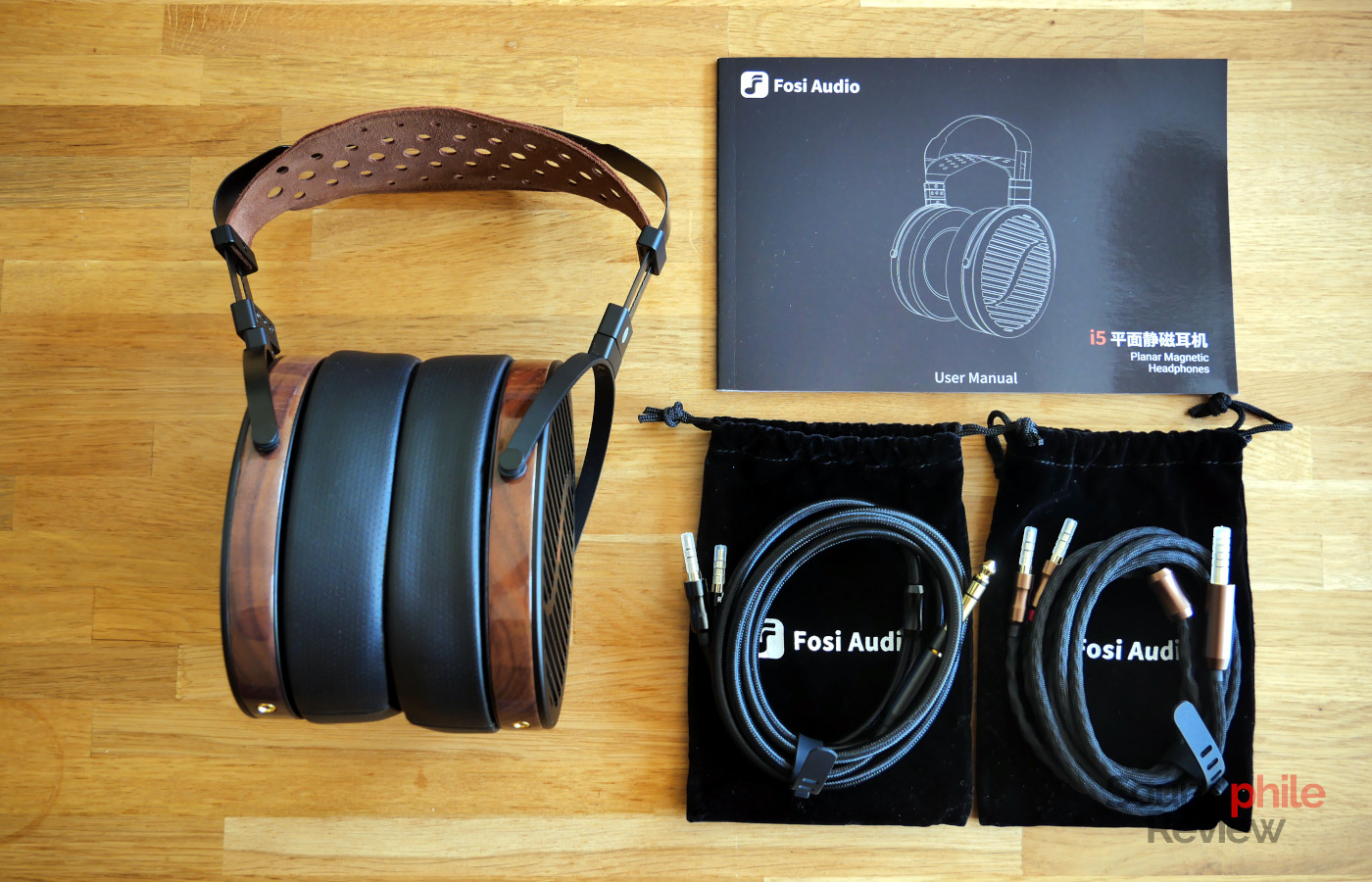
The Fosi Audio i5 come in a simple cardboard box with a whole lot of foam padding, as well as two cables: one with an unbalanced 3.5 mm termination and one with a balanced 4.4 termination. There are also a manual and a 3.5 mm to 6.3 mm jack adapter. Both cables come in their own drawstring pouch, however there is no pouch or case for the headphones themselves – a bit of a strange choice!
Design & Comfort
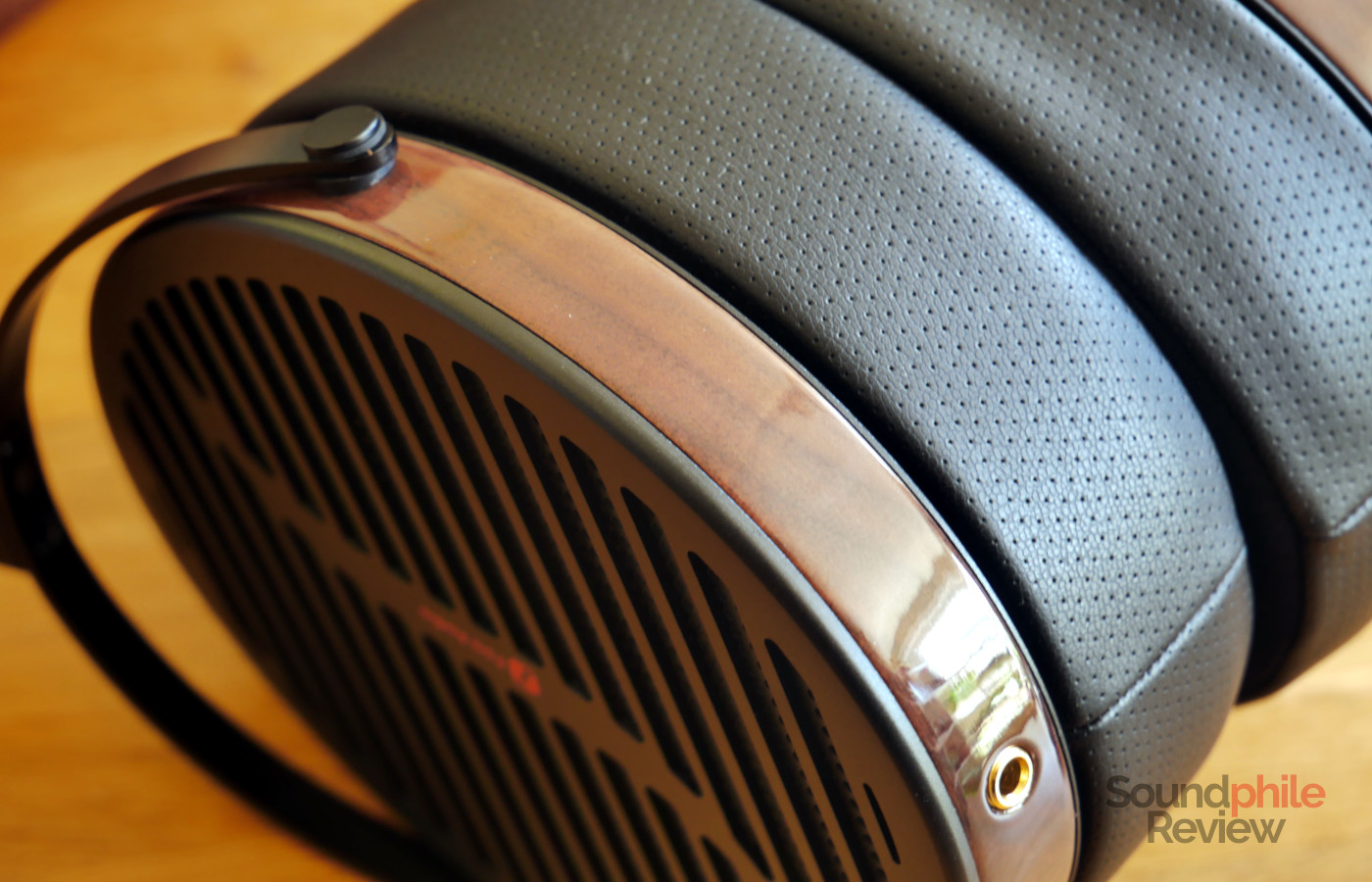
I started writing that “the design of the Fosi Audio i5 is classic and similar to that of other headphones out there”… and then I realised that I was comparing them to headphones that cost $1,000+. Surely Fosi Audio didn’t set out to redefine design, but they rather went with a “tried and true” approach and that just works, especially because they did introduce some innovations and their own touches. The earcups are entirely made of wood, with a high-gloss finish on the outside which makes the headphones look more refined and premium. In fact, I would argue that they look better than some $1,000 headphones I have tried in the past. I thought at first that this was just a veneer, but it is in fact solid machined wood.
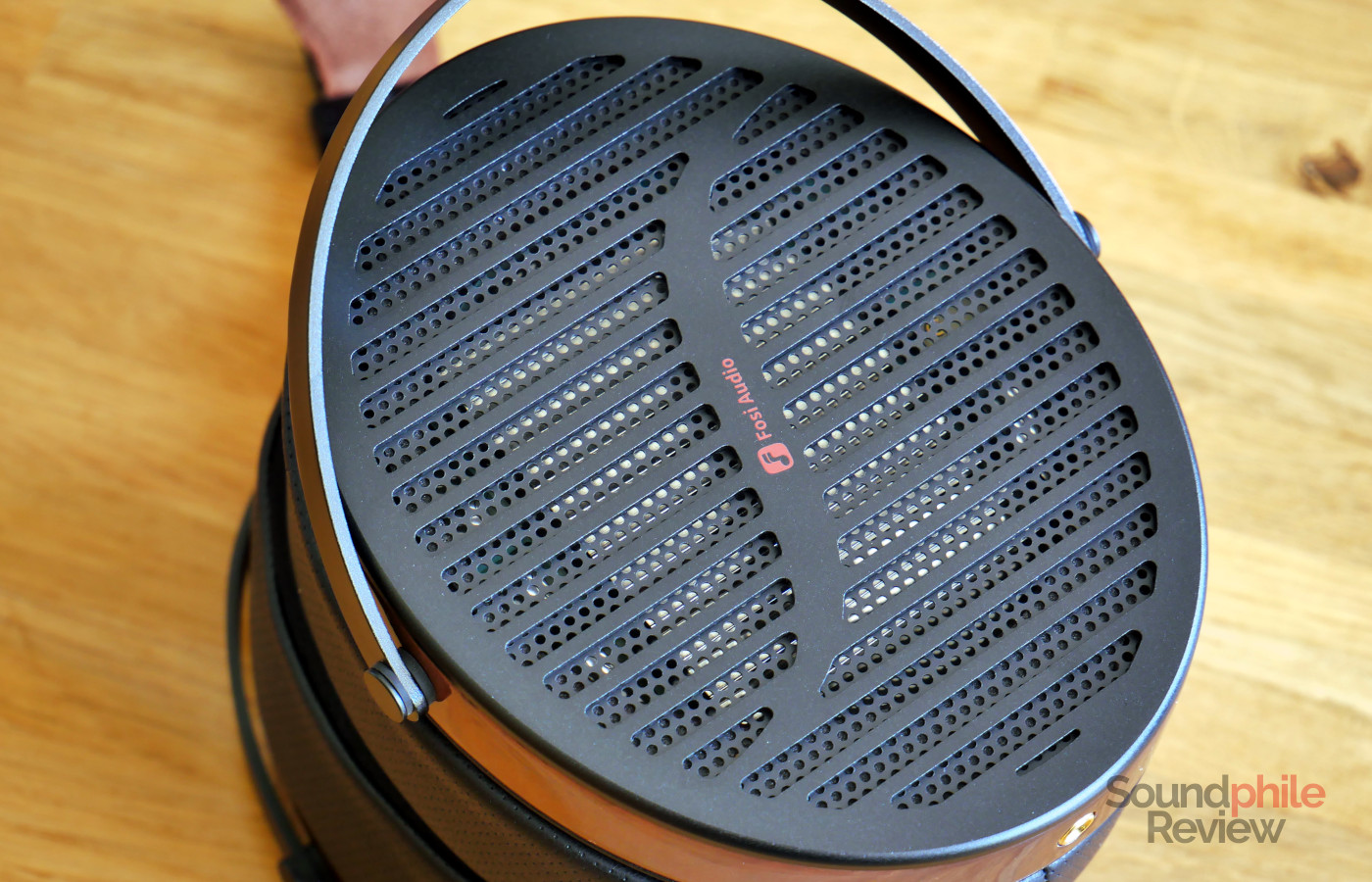
The machined aluminium grilles feature an S shape which carries the (very discreet) Fosi Audio logo; the headband is suspended and adjustable, and is actually where the innovation I was mentioning is. While most other companies have opted for discrete steps that need the support to “click” to go between one step and the next, Fosi Audio has opted for a continuous approach that allows you to freely move the headband. This mechanism works surprisingly well, as the headband stays put even after days of usage. The headband itself is made of faux leather with a suede finish, with lots of holes to keep it light and breathable, and it looks and feels like a premium product.
The gimbals move both vertically and horizontally, which makes the headphones adapt to your head size and shape easily.

Build quality is very high, especially when we consider that these are Fosi Audio’s first headphones. If we really wanted to nitpick, on thing I noticed is that the edges of the grilles can feel slightly sharp if you move your finger along them – not a real issue as there is no danger, but they can feel a bit more sharp than ideal.
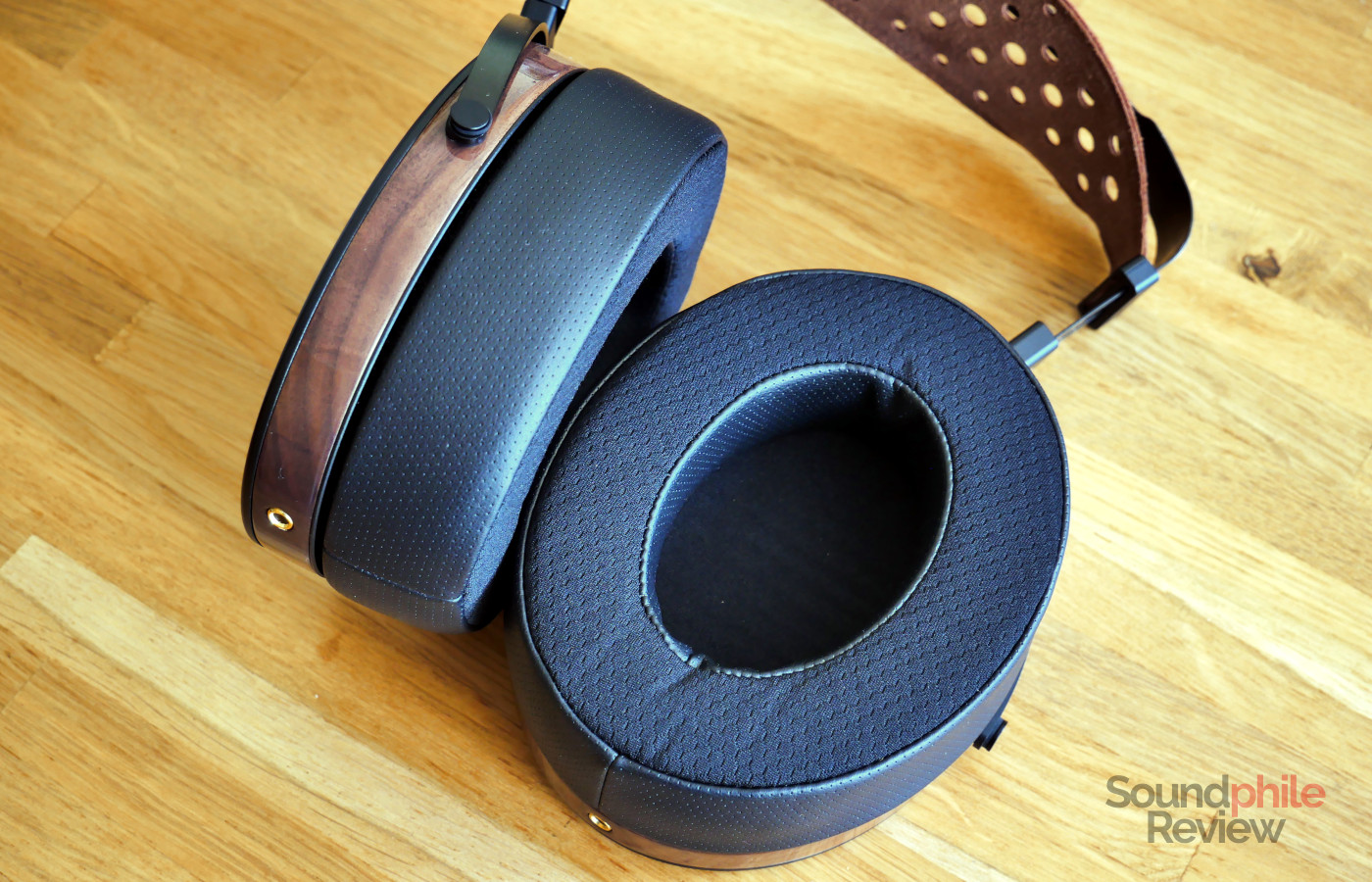
Although the Fosi Audio i5 weigh 550 g, which is not lightweight at all, they do not feel as heavy when on your head. The strap is wide enough to distribute the weight well, making the headphones sufficiently comfortable even during longer listening sessions. In fact, despite having very sensitive scalp, I can wear them for a couple of hours without feeling too much fatigue; this means most people with less annoying skin can probably keep them on for far longer. The earpads are soft enough that you bare feel them, although there is a bit of lateral pressure – which is enough for you to feel that the headphones are resting firmly on your head without becoming annoying.
The earpads, which are velour on the side resting against your head and faux leather on the sides, are held in place with a Velcro-like system which is very effective at creating a seal, despite my contrary expectations. It also makes it easier to replace the earpads if/when they wear out.
As there are open-back headphones, they obviously offer no passive isolation at all.
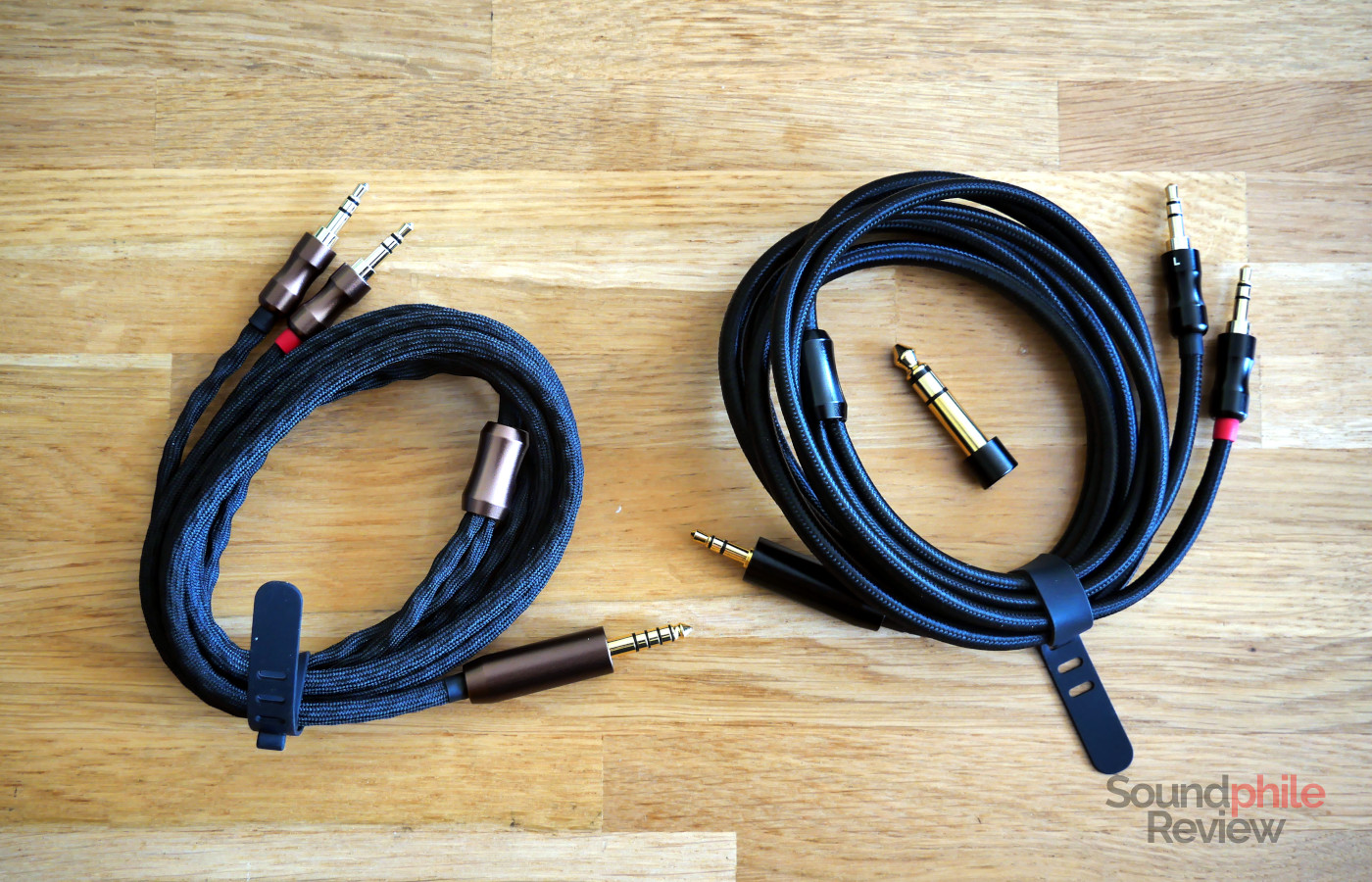
The two cables are quite different in terms of build, though both have the same terminations on the headphone side – i.e. two TRS 3.5 mm jacks. They also both use a red rubber strain relief on the cable meant to be used on the right hand side, which is also quite convenient when picking up the headphones as it immediately identifies which side they should be worn on. The cable with the 3.5 mm termination is relatively stiff and reminds me of those by HiFiMAN: it is a thick cable with a fabric sleeve and metal housings (on terminations and Y-split); it is also relatively heavy, too. It is excellent quality, too, and it is built to high standards. The same applies to the 4.4 mm cable, which is however slimmer and more malleable; it is seemingly made of four braided cores which then split into two couples of intertwined cores.
Sound & Specs
I tested the Fosi Audio i5 using an SMSL Do400.
Fosi Audio i5 |
| Frequency response | 5 – 40,000 Hz |
| Impedance | 28 Ω |
| Sensitivity | 98 dB |
Despite impedance being low at 28 Ω and sensitivity being relatively high at 98 dB, I found the i5 to be quite power hungry or, rather, to scale really well with power. When testing them with my SMSL DO400, I expected I would have to keep a very low volume on the amplifier, but I had to raise it significantly compared to what I usually do and I went from the usual -80 dB up to -60 dB. While they do work very well with sources which are a lot less powerful than the DO400, they do enjoy high-powered amplifiers and take advantage of them, so that is something to keep in mind.
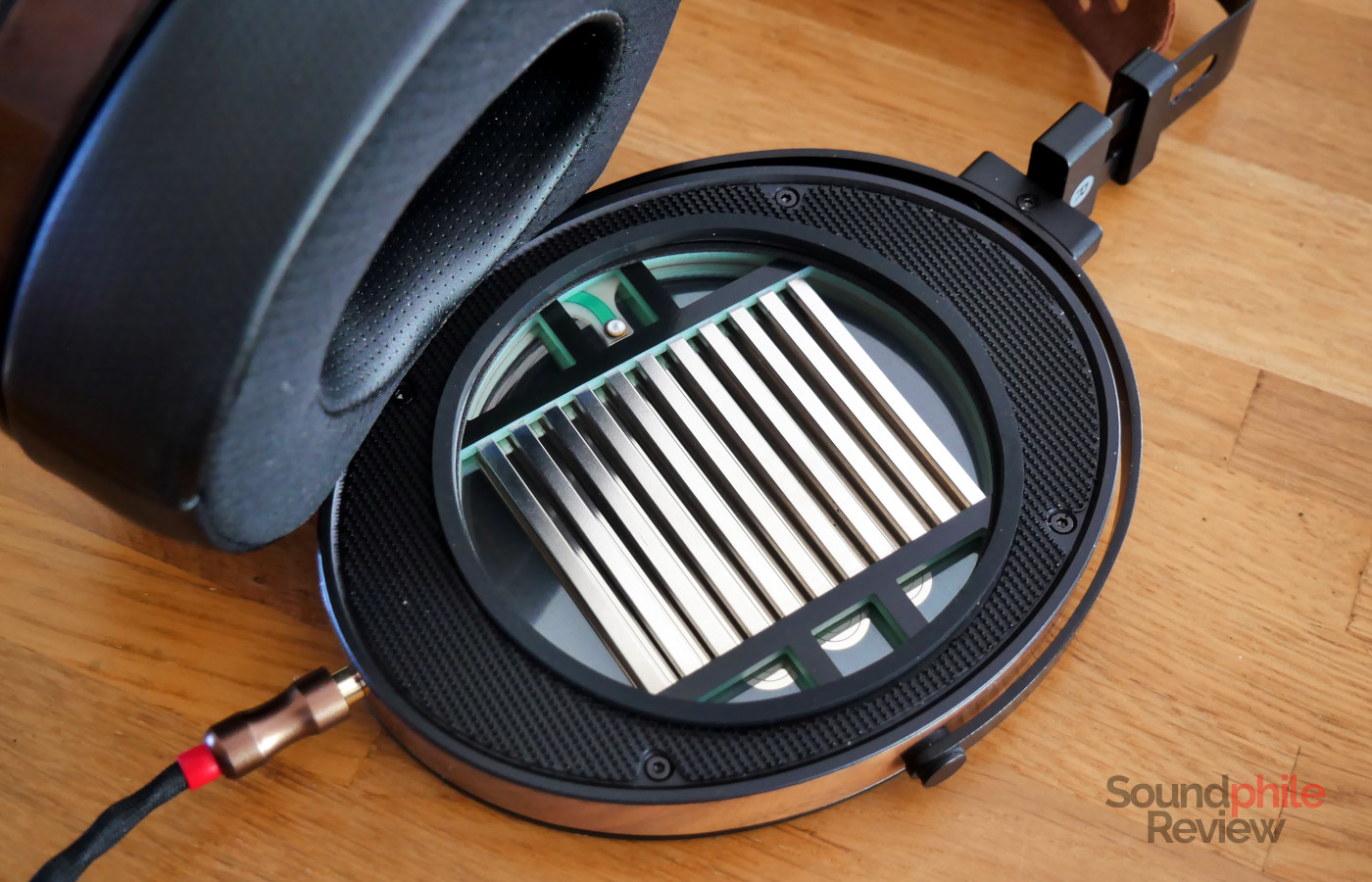
The peculiarity of the Fosi Audio i5 are the drivers that the company developed: they are planar drivers with magnets on both sides, but the real innovation is that they are circular and they are super-tense. They have a diameter of 97 mm, which is unusually large as well as of an unusual shape; planar drivers tend, in fact, to be square. According to Fosi, the circular shape “helps reduce diffraction and reflections at the edges of the diaphragm, resulting in improved frequency response and transient response. In a circular structure, stress distribution is generally more uniform even under pression or tension compared to polygons, reducing local stress concentration points and lowering the risk of distortion caused by uneven tension.” The thickness of the diaphragm is just 2 μm, which equals to 0.002 mm – in other words, it is so thin you can’t really see it. The tension of the driver seems to be a key element in differentiating the i5 from other headphones, as in many ways they sound more like electrostatic headphones than other planars thanks to their blistering speed and superb level of detail.
Despite being open-back, the i5 have a relatively small soundstage in terms of both width and depth; instruments sound close to the listener and like they are playing in an enclosed space. This matters to a point, as the imaging is such that the space does not feel cramped as there is accurate positioning and a good use of all available space – in other words, everything has a place and there is a place for everything, with instruments placed on the stage in a way that reminds me more of some speakers than headphones in the way all available space is employed effectively. Instrument separation is nothing short of excellent, even with complex and layered tracks where minute details still emerge clearly.
Bass is planar through and through: extended, smooth and tightly controlled. And it is exactly this control that makes it possible for the i5 to deliver bass which is extremely articulated and deeply textured, with a lot of layers and details always emerging clearly. Whether you are listening to The Black Mages’ Force Your Way, where bass takes a central role with its vibrant texture, or H.U.V.A. Network’s Cobalt, where it’s dry and fast. How quick bass is is indeed the very first thing you notice, as transients are sharp. Extension is good, but not exceptional: sub-bass is quite recessed compared to mid-bass, which makes some tracks sound less impactful than they could. Overall, bass is definitely present in the mix and it is never excessive nor overbearing; quite the opposite, in fact, as sometimes I wished it had a smidgen more oomph. As an example, in The Prodigy’s Smack My Bitch Up,
While writing the review of the SMSL PH-1 phono amplifier, I noticed how incredibly detailed and separated instruments were and this was no accident at all: the i5 are designed to emulate electrostatic headphones their portrayal of details and speed. We’ve already talked about how fast bass sounds, a characteristic shared with midrange as well as treble, but the consequence of this is that everything sounds crispy and it has that flavour of immediacy and suddenness imparted by electrostatics – to me it often feels like it is almost unnecessarily and unrealistically fast (if that’s even possible!), with an uncanny sensation of it being “more real than the real thing”. That same sensation is often found with the i5, especially with midrange and treble. Midrange is sensationally fast and crisp, as you can hear in the instrumental passages of The Prodigy’s Breathe or Led Zeppelin’s Achilles Last Stand (especially near the end, where Jimmy Page creates an intricate fabric of notes). Listening to Massive Attack’s Black Milk and Risingson, both male and female vocals sound convincingly natural and accurately reproduced. The level of detail is impressive and you can easily hear minute details even in complex tracks like Snarky Puppy’s Xavi, where the percussions in the intro exhibit an extremely high level of detail.
There is a distinct emphasis on the lower and middle treble areas, with a few (significant) peaks between 8 kHz and 12 kHz, which leads to high-pitched instruments being forward in the mix, as well as sibilants to be very audible (e.g. in Enya’s Marble Halls). I personally find this emphasis quite tiring and aggressive, but your mileage may vary and it really is down to your own subjective perception of sound. What this does, however, is to make many details in cymbals even more apparent: in Xavi, you can hear every hit on the cymbals with ease. Not only this, as a more general consequence the sound is quite airy and “light”, with a good counterbalance to the lower notes.
Final Thoughts
My personal preference is for headphones with less emphasis on the upper mids and treble as I find them quite fatiguing. I therefore don’t love the tuning of the Fosi Audio i5. That said, I think that the company has done something remarkable with the i5, especially when we take into consideration how they are built. I sincerely appreciate the fact that they tried a different approach and committed to it, with results that make the i5 unique in many ways: the team’s choice of going with a super-thing, super-tense driver made the headphones speed and detail monsters. The other side of the coin is that there are some peaks and troughs in the upper mids and treble sections which make the tuning quite energetic – something not everyone will appreciate.
Still, the only thing I can do is respect the original approach, especially given how good the results are. The Fosi Audio i5 are certainly different in more ways than one and they are definitely worth a listen. I wouldn’t call them an “all-rounder”, but they are a great addition to any collection and they compete with headphones even double their price – which, again, is a very significant fact on its own.
I congratulate Fosi Audio on doing an outstanding job with their first headphones. These are innovative headphones that deliver something unique – and while the tuning may not be to everyone’s tastes, I think Fosi deserves praise just for innovating and bringing something new to the table.






